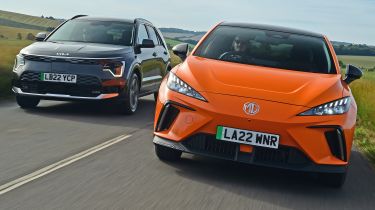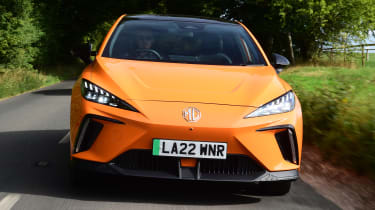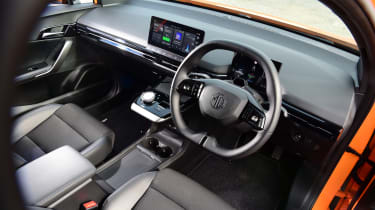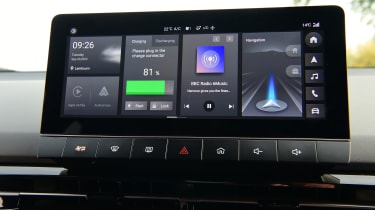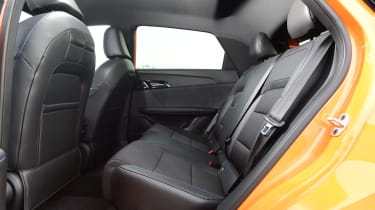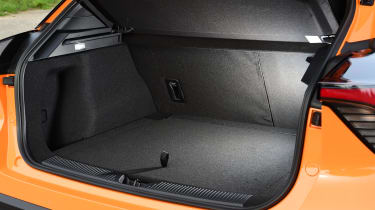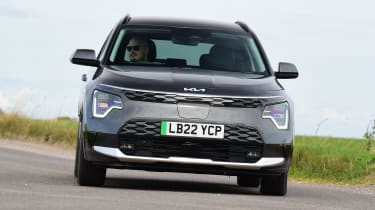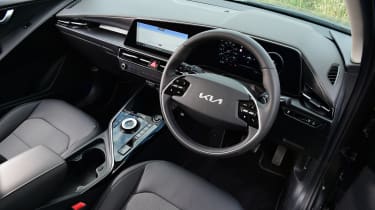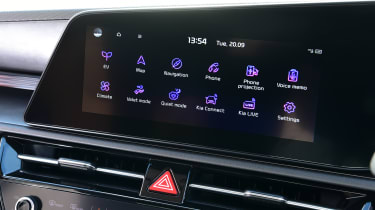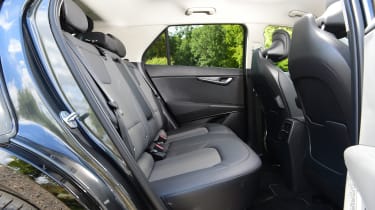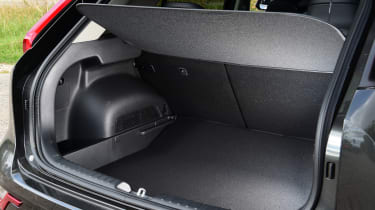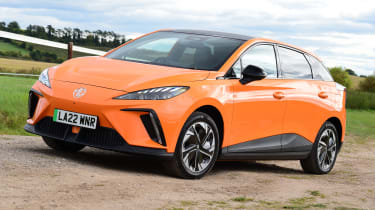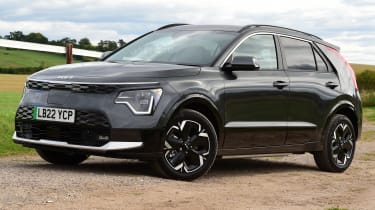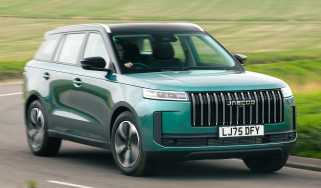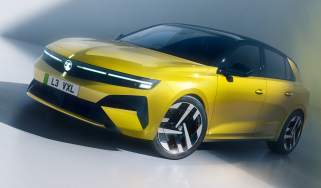MG4 vs Kia Niro EV: 2022 twin test review
The new MG4 and Kia Niro EV join the electric family car class at a busy time for the sector. But which one is best?
Under the direction of parent group SAIC Motor in China, and in a short space of time, the revitalised MG brand has gone from producing underwhelming saloons and superminis to building something, in the case of the revised ZS EV, that’s good enough to win its class at the Auto Express New Car Awards. The MG5 Estate has also shown plenty of promise, and we’ll get to drive the updated version in the UK soon.
The brand’s relentless progress shows little sign of slowing up, because there’s yet another model for us to try, and this one is all new. The MG4 is a five-door hatchback which, like its ZS stablemate, is fully electric. And as with the ZS, it appears to be competitively priced – even the top-spec model only weighs in at a touch over £31,000 – which is more remarkable still when you consider that it’s riding on an all-new platform. So is there a catch?
To find out, we’re putting the MG4 up against another exciting electric newcomer, the second-generation Kia Niro EV.
MG4
Prices for the MG4 start from £25,995, and even the top-spec Trophy Long Range model we have here, including the optional Volcano Orange paint, comes to only £32,190. That undercuts the cheapest Niro EV by more than £4,000.
Used - available now

2025 Audi
A4
46,479 milesAutomaticPetrol2.0L
Cash £20,176
2022 Nissan
Qashqai
30,150 milesAutomaticPetrol1.3L
Cash £18,797
2022 Renault
Captur
8,567 milesManualPetrol1.0L
Cash £13,197
2021 MINI
5-Door Hatch
21,551 milesManualPetrol1.5L
Cash £13,176Design & engineering
In a relatively short space of time, MG has achieved plenty of success with its two current full-EV models, the MG5 and ZS. But the MG4 aims to take that a step further, thanks to one fundamental difference between it and its stablemates. While they are electric cars adapted from existing combustion-engined models, the MG4 has been designed as a pure EV from the ground up.
An all-new structure called the Modular Scalable Platform has enabled MG to design a car much better suited to battery power. It’s taken a similar approach to the Volkswagen Group’s MEB range; there’s a rear-mounted electric motor and a wheelbase that is stretched as far possible within a modest footprint – two features that the MG4 has in common with the VW ID.3, for example.
MG offers two battery options. The smaller one is a 51kWh unit that delivers a 218-mile range on the WLTP cycle. The model we’re driving here is the Long Range model, which gets a 64kWh pack. Depending on trim, it has a range of 270-281 miles, and that figure is helped by aerodynamic-boosting features such as an active grille that opens only when the electrical systems need cool air. The electric motor produces 200bhp and 250Nm of torque, a negligible 1bhp and 5Nm down on the Niro’s.
Inside, the MG’s layout is fairly minimalist, and it’s clear that inspiration has been borrowed from German brands. This is most clear ahead of the driver; the oddly shaped steering wheel has more than a hint of the BMW iX about it, the small digital driver’s display reminds us of the VW ID.3, while the column stalks look uncannily like those you’ll find in a range of Audis. While that means the details you’ll interact with most often look and feel quite slick, elsewhere the fit and finish lags behind the Kia’s. The MG4 is an affordable car relative to its rival, though, so we’re not shocked by this compromise.
Driving
Fortunately, the cabin is one of the few areas where the MG lacks just a little sophistication. Out on the road, the way that MG4 drives doesn’t feel budget at all. There’s quite a relaxed gait to the car overall; the ride quality over larger bumps is quite soft, so it bounces over – rather than crashes into – most imperfections. At low speeds, there’s just a little more fidget than in the Kia, but it’s perfectly acceptable.
The MG is also a fine companion around town, thanks to the light, direct steering and clear forward visibility. The bonnet slopes away, so it’s hard to see the car’s edges, but the combination of a short front end and a forward-facing camera (albeit with a rather odd fisheye lens), makes it easy to position the hatchback in tight spots.
But the car’s most surprising quality is that it’s actually quite fun to drive. Turn into a corner quickly, and the MG4 initially feels a little nose-heavy, but a mix of an adjustable chassis and the rear-wheel-drive layout means that it’s possible for your inputs to hold plenty of influence over how the MG4 behaves. It certainly bodes well for the hotter model that the manufacturer has in the pipeline.
Here, performance is more than adequate for most buyers. The 0-62mph sprint is dispatched in 7.9 seconds, and the MG4 gets there with a responsive throttle – although there’s a little bit more motor whine than in the Kia.
Practicality
For its relatively compact footprint – and considering it’s 81mm lower than the Niro – the 4 is really quite spacious inside. Kneeroom is barely a fraction of a centimetre behind the Niro’s, and headroom is pretty much identical. The central hump in the floor is very low, and the middle seat is more comfortable than the Kia’s. However, limited foot space beneath the front seats, a lack of a central armrest, and awkward Isofix access (they’re behind a velcro patch and within a tight recess) are small downsides.
Despite the minimalist appearance, interior storage is impressive, too. The centre console features a large but shallow storage area with a sliding lid, while just behind it is a taller, deeper bin that doubles as an armrest.
Smaller trinkets can be secured using netting that’s attached to its leading edge. The door bins have space for bottles up front, but the glovebox is very shallow.
Ownership
Euro NCAP has yet to assess the MG4, but all versions of the hatchback get six airbags, adaptive cruise control and lane-departure warning with lane-keep assist.
The range-topping Trophy Long Range also adds blind-spot warning, rear cross-traffic alert and a door-opening warning to avoid incidents with passing traffic and cyclists to the list of safety kit.
Kia’s Niro range, which was specifically tested by NCAP in EV form in 2022, received a five-star rating.
Running costs
Our efficiency figures on test of 3.5 miles per kilowatt hour for the MG4 and 3.9 miles/kWh for the Niro show that the Kia is the more efficient car.
At a home electricity unit price of 28p/kWh, that translates into fuel costs of £1,600 over 20,000 miles for the MG and £1,436 for its Kia competitor.
Those efficiency numbers included quite significant motorway mileages – which is not the most flattering environment for EVs – and in town the figures both improved. In our hands, the MG achieved closer to 4.4mi/kWh in urban conditions, and the Kia reached closer to 5mi/kWh.
Tester’s notes: “The MG’s smartphone charging pad is angled backwards, which means that it doesn’t feel very secure when you’re driving.”
Kia Niro EV
We were impressed enough with the Niro Hybrid to name it a winner against the Nissan Juke in a previous test, but how does the all-electric version fare? The extras on our car in mid-spec 3 trim include a heat pump (£900) and Premium paint (£595), taking the total price to £40,490.
Design & engineering
Unlike MG, Kia has hedged its bets with the Niro’s underpinnings – the third generation of the Hyundai/Kia K platform – by designing the structure to accommodate both hybrid and plug-in hybrid powertrains alongside a fully electric layout.
While the name has changed from e-Niro to Niro EV, the latest model has a few similarities with its predecessor. Both produce the same 201bhp, and at 64.8kWh, the battery is an almost identical capacity. However, the new pack, which weighs 443kg, is from a fresh supplier, and it’s integrated into a body-in-white that is 20.3kg lighter than its predecessor’s.
That’s to be applauded, not least because not only does Kia claim a one per cent increase in structural rigidity, but the car is also physically larger; at 4,420mm, the new model is 65mm longer than the its e-Niro predecessor and 133mm longer than the MG4.
Further tweaks to the suspension include new bearings with less friction in the MacPherson struts at the front, which the Korean manufacturer says will help to deliver a smoother response from the dampers and a more natural steering feel.
There are more significant improvements in other areas, most notably the cabin. The EV6-inspired dashboard looks very slick, and the control layouts are neat and logical. The driving position has plenty of adjustment (as does the MG’s), although while the seats themselves are perfectly comfortable, some people might find the headrests are positioned a little too far forwards.
Cabin quality is a noticeable step ahead of the MG’s, but there are still some large expanses of hard plastics on the Niro EV’s doors.
Driving
The Niro’s chassis engineers have opted to prioritise comfort over ultimate roadholding for the latest Niro, which is something that we think makes perfect sense. The ride is fairly soft, but there’s slightly less body movement than in the MG.
It’s also a little more composed at lower speeds than the MG4, while refinement has its good and bad points. The noise from the Kia’s motor is better isolated than in its rival, but the Niro EV undoes this good work somewhat by allowing more road noise to reach the cabin, making it the noisier car on a motorway. Performance is near-identical between the pair, but the Kia’s motor feels slightly less keen when pulling away from a standstill.
The Kia comes with five modes to adjust the brake regeneration on the move. That’s one more than in the MG, and thanks to steering wheel-mounted paddles, the Niro’s modes are much easier to adjust to your exact taste and the driving conditions. The MG’s regeneration settings are buried within a sub-menu on the infotainment screen. Both cars have automatic energy-recovery modes, which adjust to the traffic around you. Some might like these systems, but we found the unpredictability of them a bit irritating, and switched them off.
Practicality
While the need to package both combustion and electric powertrains within a car’s structure has some disadvantages, there are benefits too.
Electric motors are much smaller than internal combustion engines, so without a big lump of metal taking up space under the bonnet, the Niro EV gets a storage compartment that’s large enough to hold the charging cables. Keeping these separate from the car’s boot is ideal if it’s full of luggage, or you want to keep the cabin dry after you have had to charge the Korean model in the rain.
The Kia is much better for carrying cargo, too. There’s a generous 475 litres of boot space – 112 litres more than in the MG – which expands to 1,392 litres with the seats folded. That’s much more than the MG’s 1,177 litres. Both cars have false boot floors that create a level load lip when raised.
Cubby spaces are reasonable in the Niro EV. The smartphone shelf is more than large enough to hold even the grandest of new devices, while the central space can be used for general storage or double up as a twin cup-holder, which springs into action by pressing one of two buttons. The door bins are quite slim, though, which means that there’s nowhere useful to hold a bottle.
Ownership
Few manufacturers can compete with Kia when it comes to warranty cover, but MG is one of them. Both brands offer their customers seven years of protection from new.
Kia has a slight edge because its package runs to 100,000 miles while the MG’s is 80,000 miles, but both are comprehensive. One year of breakdown cover is provided free of charge by both, too.
Running costs
Although the Kia is more pricey to buy initially than the MG, it’s also much better at holding on to its value.
After three years and 36,000 miles, the Niro is expected to retain 58 per cent of its original value, while its rival is predicted to keep less than 51 per cent of its £31,495 on-the-road price.
Typical of any electric vehicle, both of these models offer fantastic value for company car users. Sitting in the lowest two per cent Benefit-in-Kind bands, the MG and Kia only face annual deductions of £252 and £312 respectively for higher-rate income tax payers.
Tester’s notes: “The Niro’s lightweight fabric parcel shelf twists and folds down into a small disc when not in use, so it can be stored in pretty much any cubby you like.”
Results
First place: MG4
The MG4 marks the next major step in the brand’s UK return. It drives well, it has the performance to match the Niro EV, a practical range with rapid charging, and loads of space inside. But most impressive of all is the price. No credible rival comes close to offering so much for the money, which is why this is one of the bargain EVs of the moment.
Second place: Kia Niro EV
The Niro EV is a very appealing electric car. It’s comfortable, the tech is slick, and beside the MG, it’s undoubtedly more special inside and out. It also has its rival beaten for boot space, and is more efficient with its energy. However, it’s impossible to overlook the gulf in cost between the two; the MG offers almost everything the Niro does for significantly less cash.
Four alternative electric family cars
Vauxhall Mokka-e
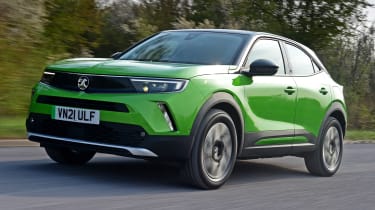
- Model: GS Line
- Price: £32,685
- Power: 1x e-motor, 134bhp
Vauxhall has a hit on its hands with the Mokka-e. We reckon it’s the most eye-catching car the firm makes, and looks contemporary when compared with the other cars here.
It’s more understated inside, but it’s well finished and the driving position is comfortable. The MG4 and Niro are more spacious in the back, though. The Mokka’s 310-litre boot is barely any more than a typical supermini’s. But it’s smaller than its competitors overall, so it’s not surprising that there would be some compromise.
The 50kWh battery is also smaller, so it can’t compete for range. But Vauxhall has improved the powertrain since the model was launched, and the Mokka-e can now cover 209 miles on a full charge. It’ll charge at a maximum speed of 100kW, so a 10-80 per cent charge takes 30 minutes.
There are two trim levels, with the GS Line starting from £32,685. It has 18-inch alloys, heated front seats and a camera.
Cupra Born
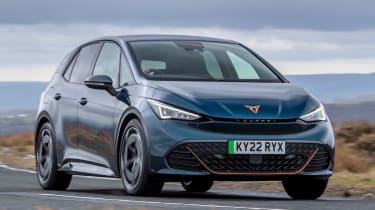
- Model: V2 58kWh
- Price: £36,635
- Power: 1x e-motor, 201bhp
We’ve spent lots of time with the Cupra Born, and to us it’s a more convincing attempt at an EV hatchback than the platform-sharing Volkswagen ID.3. Key to this is the interior. Cupra has used textures and materials in a way that hints the Born is a more upmarket product than the VW.
But like the ID.3, it also mixes smart ergonomics - such as digital dials that adjust with the steering wheel - with the baffling; the touch and sliding ventilation and volume controls are fiddly and aren’t backlit. There are also only two switches for all four electric windows, so you must press a touch-sensitive key to change their function from front to back.
Yet the Born has some great strong points. Efficiency is one, because it can deliver a WLTP range of up to 339 miles with the largest 77kWh battery.
It’s reasonably fun to drive, too, but is hindered by its price. It starts from £34,715 for the 58kWh battery in basic V1 trim. Go for the top spec and a big battery, and the Born nudges £42,000 before options.
MG ZS EV
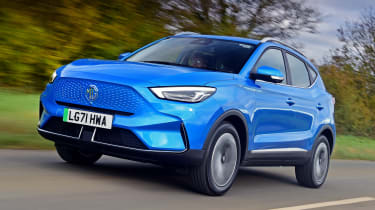
- Model: Trophy Long Range
- Price: £34,495
- Power: 1x e-motor, 154bhp
MG’s earlier EVs have been overshadowed by the new MG4, but that doesn’t mean they lack appeal. The ZS offers the benefits of an EV in a fairly compact SUV shape at a price that will continue to tempt buyers into the brand’s growing dealer network.
The ZS EV starts from £29,495 with a 51kWh battery and a 189-mile range – the 73kWh model adds another 84 miles of range for an extra £2,500. While it’s not quite the bargain the MG4 is, in SUV terms it still beats its closest competition.
Overall, the ZS is more conventional than the 4; the dash looks plain, but has a sharp, bright and colourful infotainment system. Cabin space is comfy for four adults - rear headroom is excellent - and the 470-litre boot will hold bulky items.
The ZS’s road manners won’t blow away anyone for sportiness or comfort, but there’s little to complain about. The car grips just fine, the ride is okay and the instant 280Nm of torque and 154bhp from the electric motor mean the ZS feels anything but sluggish.
Nissan Leaf
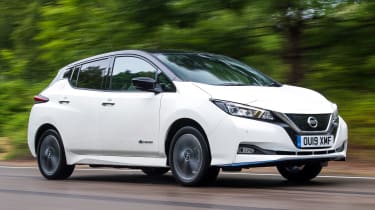
- Model: Leaf-e+ N-Connecta
- Price: £34,945
- Power: 1x e-motor, 214bhp
The Leaf is the oldest car here and it’s starting to show its age. That’s most clear once you step inside. Beyond the cosmetic fact that the dash looks dated and the in-car tech is past its best, beside the MG the cabin is cramped, and the driving position will be too high for most people. It also uses a ChaDeMo charging connection, which limits speeds to 50kW, and the places where you can plug in.
But the Leaf still has its plus points. In a straight-line sprint, it’s more than a match for the MG and Kia, because the e+ model is able to cover the 0-62mph sprint in 6.9 seconds. This version has a range of 239 miles, too, thanks to its 59kWh battery.
It also has price on its side. The Leaf line-up starts at £28,995, which gets you the 168-mile 39kWh model in Acenta trim. This comes with climate control, cruise control and an eight-inch touchscreen with Apple CarPlay and Android Auto as standard. The e+ model costs a significant £4,500 more than the equivalent standard-range version, however.
Figures
| MG4 Trophy Long Range | Kia Niro EV ‘3’ | |
| On the road price/total as tested | £31,495/£32,190 | £38,995/£40,490 |
| Residual value (after 3yrs/36,000) | £15,974/50.7% | £22,602/58.0% |
| Depreciation | £15,521 | £16,393 |
| Annual tax liability std/higher rate | £126/£251 | £156/£311 |
| Annual elec. cost (12k/20k miles) | £960/£1,600 | £862/£1,436 |
| Ins. group/quote/road tax cost | 29/N/A/£0 | 29/£679/£0 |
| Servicing costs | N/A | £479 (3 years) |
| Length/wheelbase | 4,287/2,705mm | 4,420/2,720mm |
| Height/width | 1,504/1,836mm | 1,585/1,825mm |
| Powertrain | Rear e-motor/lithium-ion battery | Front e-motor/li-ion battery |
| Peak power | 200bhp | 201bhp |
| Peak torque | 250Nm | 255Nm |
| Transmission | Single-speed/RWD | Single-speed/FWD |
| Battery capacity/usable | 64/61.7kWh | 64.8/64.8kWh |
| Boot capacity (seats up/down) | 363/1,177 litres | 475/1,392 litres |
| Kerbweight/payload/towing capacity | 1,685/448/500kg | 1,739/461/750kg |
| Turning circle | 10.6 metres | 10.6 metres |
| Basic warranty (miles)/recovery | 7 yrs (80,000)/1yr | 7 yrs (100k miles)/1 yr |
| Driver Power manufacturer/dealer pos. | 28th/N/A | 3rd/5th |
| NCAP: Adult/child/ped./assist/stars | N/A | 91/84/76/79/5 (2022) |
| 0-62mph/top speed | 7.9 secs/100mph | 7.8 secs/103mph |
| Auto Express economy (miles/kWh) | 3.5 | 3.9 |
| Auto Express predicted range | 216 miles | 253 miles |
| Claimed range (WLTP) | 270 miles | 285 miles |
| Charging capability | 7.2/135kW | 11/72kW |
| Charging time | 9hrs/35*mins | 6hrs 20mins/43*mins |
| CO2/tax bracket | 0g/km/2% | 0g/km/2% |
| Airbags/Isofix/parking sensors/camera | Six/yes/rear/360 | Eight/yes/f&r/yes |
| Auto/lane keep/blind spot/AEB | Yes/yes/yes/yes | Yes/yes/yes/yes |
| Clim./cruise ctrl/leather/heated seats | Yes/yes/artificial/y | Yes/yes/vegan/yes |
| Metallic paint/LED lights | £545/yes | £595/yes |
| Keyless go/powered tailgate | Yes/no | Yes/yes |
| Nav/digital dash/DAB/connected apps | Yes/yes/yes/yes | Yes/yes/yes/yes |
| Wireless charging | Yes | Yes |
| Apple CarPlay/Android Auto | Yes/yes | Yes/yes |
